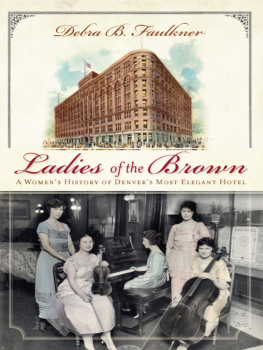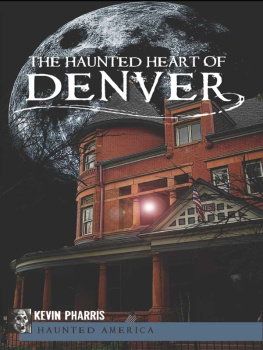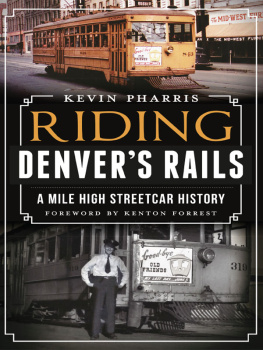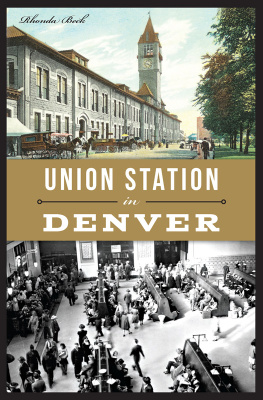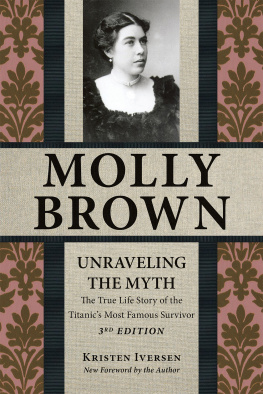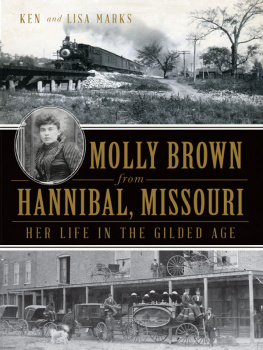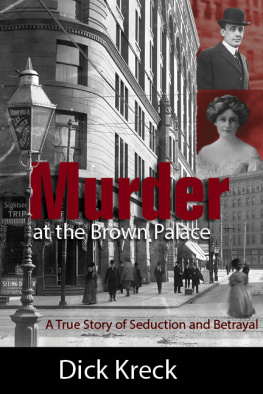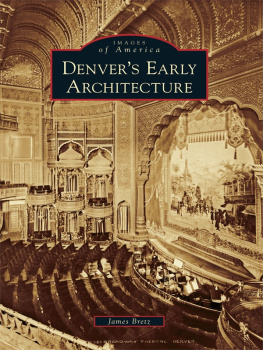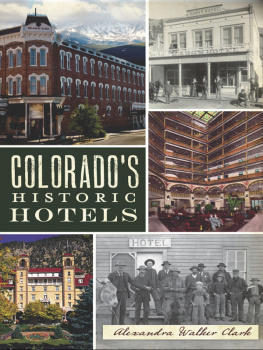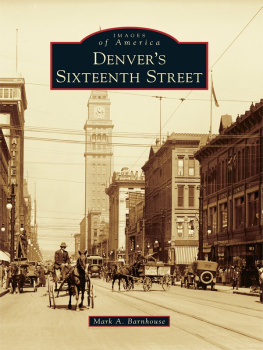

Published by The History Press
Charleston, SC 29403
www.historypress.net
Copyright 2010 by Debra B. Faulkner
All rights reserved
Front cover: top: etching of the Brown Palace, circa 1893, from The Brown Palace Hotel, in-house publication; bottom: ladies string quintet, from the Calvin Morse scrapbooks, circa 1910. Images courtesy of the Brown Palace unless otherwise stated.
First published 2010, Second printing 2011, Third printing 2011
e-book edition 2012
ISBN 978.1.61423.636.8
Faulkner, Debra B.
Ladies of the Brown : a womens history of Denvers most elegant hotel / Debra Faulkner.
p. cm.
Includes bibliographical references and index.
print edition ISBN 978-1-60949-128-4
1. Brown Palace Hotel--History--Anecdotes. 2. Brown Palace Hotel--Biography--Anecdotes. 3. Women--Colorado--Denver--Biography--Anecdotes. 4. Denver (Colo.)--Biography--Anecdotes. 5. Women--Colorado--Denver--Social life and customs--Anecdotes. 6. Denver (Colo.)--Social life and customs--Anecdotes. 7. Denver (Colo.)--History--Anecdotes. I. Title.
TX941.B78F28 2010
910.460978883--dc22
2010044195
Notice: The information in this book is true and complete to the best of our knowledge. It is offered without guarantee on the part of the author or The History Press. The author and The History Press disclaim all liability in connection with the use of this book.
All rights reserved. No part of this book may be reproduced or transmitted in any form whatsoever without prior written permission from the publisher except in the case of brief quotations embodied in critical articles and reviews.
This book is respectfully dedicated to Julia Kanellos, passionate guardian of Brown Palace treasures and memories for more than a decade.
Contents
Acknowledgements
The History Press initially contacted me soliciting a collection of ghost stories from the Brown Palace. Like so many old hotels and mansions, the Brown has its share of unexplained phenomena. But unlike places that capitalize on their spurious specters, Denvers most venerable hotel has a lot more going for it. Commissioning Editor Becky LeJeune took a chance in agreeing to let me instead approach the Browns story from a womens history perspective, an area into which the publishers had never before ventured. I appreciate her open mind and the confidence she placed in me, and I hope this book will encourage The History Press to publish more womens histories in the future.
My most profound thanks are due Julia Kanellos, my predecessor as Brown Palace historian. She bequeathed me a treasure-trove of archival materials from which to draw for Ladies of the Brown. Building on and further organizing the invaluable assortment of both primary and secondary sources originally assembled by the first hotel historian, Corinne Hunt, Kanellos created a rich basis for research, impressive in both its breadth and depth. I am immeasurably indebted to both ladies for making this project possible, allowing me to combine my two greatest passions, Colorado and womens history. Additionally, Julias meticulous content and style review of my manuscript helped to ensure not only accuracy and readability but also that my writing did justice to the stories of both the ladies and the hotel. I like to think that this is the book Julia would have written had she not been so busy pursuing her masters of library science at the University of North Texas.
Special thanks to Marcel Pitton, managing director of the Brown Palace, and to his wife, Pam, for their support of this project. Mark Shine, director of sales and marketing, generously allowed me to scan and to use images from the hotels archives. From guest registers to scrapbooks and postcards to menus, these bits of ephemera have contributed immeasurably to representing changes in the Brown Palace and in its social context over more than a century of operation. Unless otherwise credited in the captions, all images in this book were mined from the rich resources of the Brown Palace archives.
Coi Gehrig, photo imaging specialist with the Denver Public Library Western History Collection, could not have been more wonderful to work with. And though History Colorado (formerly the Colorado Historical Society) has technically gone dark until the completion of its new home in 2012, Jennifer Vega in its photo department provided timely and cordial attention to my requests.
My sincere appreciation goes to Dr. Thomas Couch of the Owyhee County Historical Museum & Library, Nancy Marshall of the Mountain Home Historical Museum and Philip Homan for kindly providing both information and images relating to the life of Idahos Queen of Diamonds. Thanks to Betty Lynne Hull and the Gurtler family, Emily Griffith Opportunity School and Jenna Robbins for granting me the privilege of including their archival and personal photographs.
For sharing their own stories, I am most grateful to Marge Harmon, Corinne Hunt, Charlene Orr-Webb and Barbara Goodrich. Fellow Colorado historians Tom Noel and Joyce Lohse provided answers to my many questions, the wisdom of their experience and endless encouragement.
I acknowledge my debt to all of the people who have taken my historical tours of the Brown and to the students in my Metropolitan State College Colorado history classes for teaching me what sorts of stories resonate with them. Theyve helped me to improve the way I bring history to life, both in person and in print.
My mother, Laurel Benson, drew me into the excitement of Colorado history from a very young age. Her enthusiasm for her adopted state and for the colorful characters of its past was contagious. A writer and teacher herself, she has always inspired me by her example and supported me unconditionally.
My husband and best friend, James Faulkner, endured frozen dinners, shoddy housekeeping and periodic panic attacks throughout the creation of this book. He forgave my lousy time management and understood my determination to share the personal stories that enliven local history. He always doeswhich is why of all the ladies of the Brown, I consider myself the most fortunate.
Introduction
An Oasis of Elegance
Wealth is making fabulous progress in Colorado, but the Brown Palace is of itself proof that art and culture keep step with riches, and invention is no laggard. Once beneath its restful influences, the hardships and annoyances of travel are soon forgotten and replaced by the pleasant impressions produced by such surroundings, and the delightful buoyance of mind and body always imparted by the exhilarating atmosphere of this favored State.
The Brown Palace Hotel, in-house publication, circa 1893
The history of the Brown Palace is deeply intertwined with the history of Denver and the American West. Though the Brown Palace is best known for catering to masculine power brokers of the Rocky Mountain Empire, the Grande Dame of Denvers hotels has always enchanted the fairer sex. From the moment it opened in 1892, the Browns elegance and ambiance have drawn ladies who appreciate the finer things. The venerable venue has set the stage for countless scenes of romance and scandal, new beginnings and cherished memories. In ways significant or small, the Brown touches everyone who passes through its doors.
Founder Henry C. Brown arrived on the Denver scene in the wake of the 1859 Pikes Peak or Bust! gold rush. In a stroke of real estate genius, Brown gave ten acres on a hill in the middle of his homestead to the territory of Colorado in 1868. The hill Henry called Browns Bluff made a commanding site for the proposed state capitol building.
Next page
